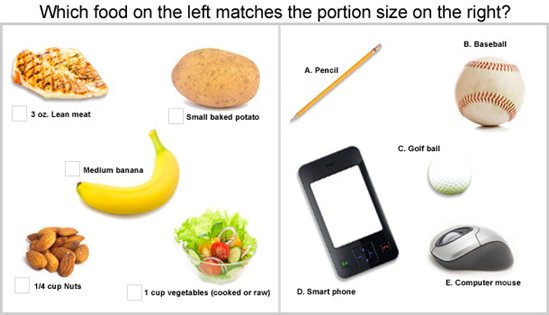Nutrition Month is coming to a close, but we want you to stay healthy year around. Use these tips to keep yourself motivated and on the right track when it comes to eating healthy!
- Figure out what energy your body needs. Use our tool, My Fats Translator, where you can get recommendations designed specifically for you. This tool calculates your personalized daily calorie needs, recommended range for total fats, and provides you with your body mass index (BMI). Write down or print the info, and keep it handy so you remember.
-
Manage your limits. Now that you know your personal limits for calories, fats and cholesterol, you have a better idea of how to use the numbers on the Nutrition Facts panel. For example, if you only need 1800 calories, then the Baby Back Ribs with 734 calories per serving (a big chunk of what you should have) don't look so tempting because that is 40% of your daily calorie allowance. Remember to watch the serving size, too.
Think of it like your checking account--don't spend more than you earn, and don't eat more than you burn in one day. It's a good rule of thumb for both. - Shake the sodium habit. The AHA recommends that everyone consume less than 1500 mg of sodium per day. Low-sodium foods have 140 mg or less per serving. Keep that in mind to guide your choices.
- Fill up on fruits and vegetables. The AHA recommends 4.5 servings per day of each based on a 2000 calorie diet. A serving is 1 cup of leafy greens or 1/2 cup of frozen, raw or cut up vegetables, or 1 medium fruit. If you have a serving at breakfast, lunch and dinner, then at your morning and afternoon snacks, you'll have exceeded the recommendation. You'll be on the road to getting the nutrients you need to fight disease, feel good, and improve your health.
- Balance calories by increasing your activity level. You don't have to go to the gym. Do something you enjoy, and you'll be more likely to stick with it. Take a brisk walk with your favorite music or podcast, play tag with your kids, or grab a pal and try walking together.
- Learn portion sizes. Understanding portion size and what you need each day is important for avoiding high-calorie foods, but also to avoid overeating “healthy” foods. Take a look at the examples below and see how easy (or difficult) it is to choose accurate food portions.
Answer Key: A = Medium banana, B = 1 cup vegetables (cooked or raw), C = 1/4 cup nuts, D = 3 oz. lean meat, E = Small baked potato
As Nutrition Month ends take the time to let the USDA know that you support strong, consistent nutrition guidelines for all foods sold in schools today!



Be the first to comment